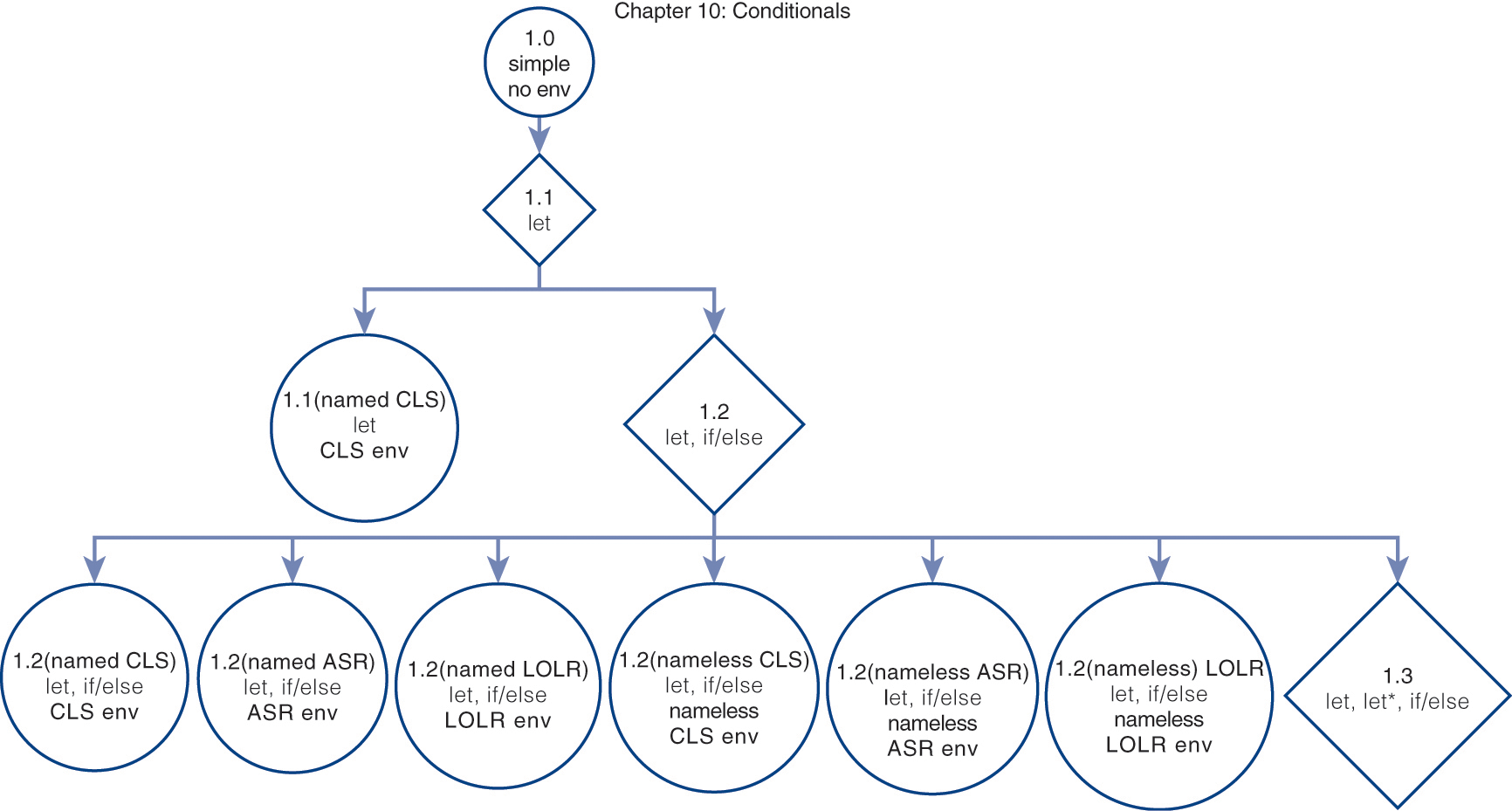10.11 Chapter Summary
The main elements of an interpreter language implementation are:
a read-eval-print loop user interface (e.g., main_func)
a front end (i.e., scanner and parser, e.g., parser.parse)
an abstract-syntax data type (e.g., the expression data type TreeNode)
an interpreter (e.g., the evaluate_expr function)
supporting data types/structures and libraries (e.g., environment)
Figure 10.4 and Table 10.2 indicate the dependencies between the versions of Camille developed in this chapter, including the programming exercises. Table 10.3 summarizes the concepts and features implemented in the progressive versions of Camille developed in this chapter, including the programming exercises. Table 10.4 outlines the configuration options available in Camille for aspects of the design of the interpreter (e.g., choice of representation of referencing environment).

Figure 10.4 Dependencies between the Camille interpreters developed in this chapter. The semantics of a directed edge a → b are that version b of the Camille interpreter is an extension of version a (i.e., version b subsumes version a). (Key: circle = instantiated interpreter; diamond = abstract interpreter; ASR = abstract-syntax representation; CLS = closure; LOLR = list-of-lists representation.)
DescriptionTable 10.2 Versions of Camille (Key: ASR = abstract-syntax representation; CLS = closure; LOLR = list-of-lists representation.)
Version | Extends | Description |
|---|---|---|
Chapter 10: Local Binding and Conditional Evaluation | ||
|
1.0 1.1 1.1(named CLS) 1.2 1.2(named CLS) 1.2(named ASR) 1.2(named LOLR) 1.2(nameless CLS) 1.2(nameless ASR) 1.2(nameless LOLR) 1.3 |
N/A 1.0 1.1 1.1 1.2 1.2 1.2 1.2 1.2 1.2 1.2 |
simple, no environment let, named CLS|ASR|LOLR environment let, named CLS environment let, if/else let, if/else, named CLS environment let, if/else, named ASR environment let, if/else, named LOLR environment let, if/else, nameless CLS environment let, if/else, nameless ASR environment let, if/else, nameless LOLR environment let, let*, (named|nameless) (CLS|ASR|LOLR) environment |
Table 10.3 Concepts and Features Implemented in Progressive Versions of Camille. The symbol ↓ indicates that the concept is supported through its implementation in the defining language (here, Python). The Python keyword included in each cell, where applicable, indicates which Python construct is used to implement the feature in Camille. The symbol ↑ indicates that the concept is implemented manually. The Camille keyword included in each cell, where applicable, indicates the syntactic construct through which the concept is operationalized. (Key: ASR = abstract-syntax representation; CLS = closure; LOLR = list-of-lists representation. Cells in boldface font highlight the enhancements across the versions.)

Table 10.4 Configuration Options in Camille
Interpreter Design Options | |
|---|---|
Type of Environment Representation of Environment | |
|
named nameless |
abstract syntax list of lists closure |
